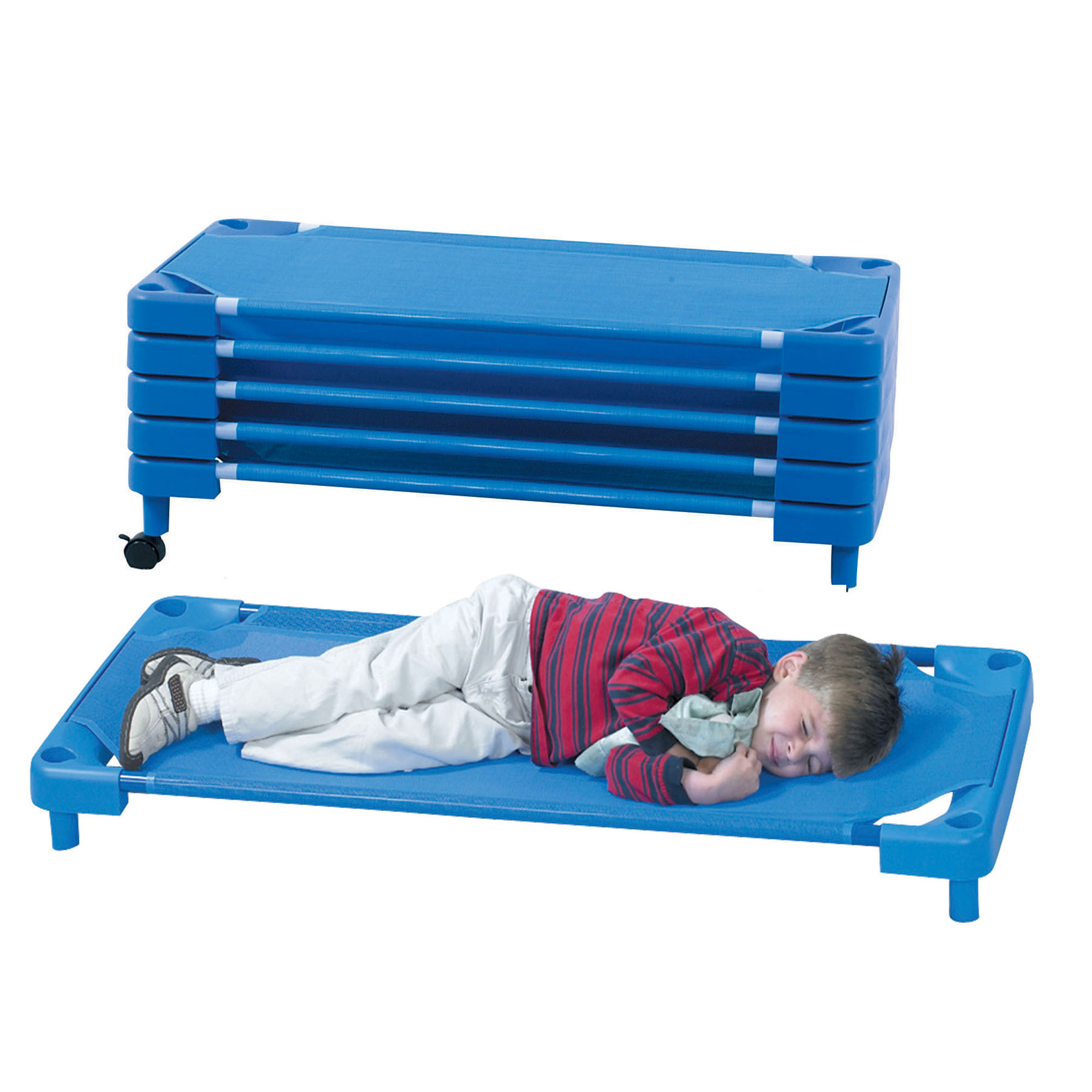

Pillows, blankets, and sleep positioners should not be used with infants (2). Seasonally appropriate covering, such as sheets, sleep garments, or blankets that are sufficient to maintain adequate warmth, should be available and should be used by each child below school-age. No child should sleep on a bare, uncovered surface. Plastic bags or loose plastic material should never be used as a covering. Mats and cots should be made with a waterproof material that can be easily washed and sanitized. When pads are used, they should be enclosed in washable covers and should be long enough so the child’s head or feet do not rest off the pad. See Standard 5.4.5.2 for crib specifications. Sheets for an adult bed should not be used on a crib mattress because they could become loose and entangle an infant (2). Bed linens used under children on cots, cribs, futons, and playpens should be tight-fitting. Regardless of age group, bed linens should not be used as rest equipment in place of cots, beds, pads, or similar approved equipment. Beds and bedding should be washed between uses if used by different children. Consumer Product Safety Commission (CPSC) and ASTM safety standards and have not been recalled by the manufacturer (1).Ĭlean linens should be provided for each child. Facilities should ensure that furniture and surfaces for sleeping are in compliance with the current U.S. No child should simultaneously share a crib, bed, or bedding with another child. COVID-19 modification as of September 20, 2021.Īfter reading the CFOC standard, see COVID-19 modification below (Also consult applicable state licensure and public health requirements).įacilities should have an individual crib, cot, sleeping bag, bed, mat, or pad for each child who spends more than four hours a day at the facility.


 0 kommentar(er)
0 kommentar(er)
